Photography and Politics
A photograph does not always tell the truth. Sometimes, the most successful artist is the one who lies best. As Pablo Picasso said:
We all know that Art is not truth. Art is a lie that makes us realize truth, at least the truth that is given us to understand. The artist must know the manner whereby to convince others of the truthfulness of his lies.
In telling us a story about the world, artists, like politicians, make choices. Things are not always as they are represented. One story can obscure another; elements can be painted out and others can be added. A dark, gloomy sky can be replaced with a radiant sunrise, and a gilded frame can elevate a questionable narrative.
Politics is about the struggle for power. It’s the means by which those who have too much conspire to obtain more, and those from whom they conspire to take it strive to survive. For the cynical, politics is the art of messaging, manipulation, and misrepresentation. It is the art of the lie that disguises the truth.
Photography, like politics, is about selecting and framing subjects and telling stories. You decide what to include in the frame and what to crop out. Your choice depends on where you stand and what you want to highlight. You can zoom in and focus on one day, say, October 7, 2023, or pull back to 1948. With a wide angle, you can cover hundreds of years. If you have a macro lens in your bag, you can fill the entire frame with one small, isolated incident. A more complex narrative might require a considered sequence. You could make a point with an engaging close-up that leads to a sweeping generalization. Alternatively, you could begin with a panoramic view of history and bring the message home with an appealing personal narrative. Imagine a multitude of images (close-up, distant, bird's eye, worm's eye, curbside) in quick succession, with music—a collage of emotions and ideas, a let-it-all-rip, full-throated Broadway musical. How you say it matters as much as what you say.
Pro-Palestinian Marches in Dunedin, New Zealand
Every Saturday since mid-October 2023, a sizeable group has assembled in Dunedin, New Zealand, to protest the Israeli genocide in Gaza and call for an immediate and lasting ceasefire. We gather at the Otago Museum at 2:00 PM and march through downtown to The Octagon, the civic centre. Each week, we get an update on what’s happening in Gaza and the West Bank from the organisers, who have family there. Other speakers, including Palestinians, Muslims, Jews, union organisers, community volunteers, student leaders, religious leaders, historians, academics, writers, poets, and politicians, offer their views. Musicians perform; the speeches are informative, heartbreaking, and uplifting. Fruit, biscuits, and drinks are served under a temporary awning. We are encouraged to take whatever action we can in the face of the latest horrific news. We are urged to remain hopeful. Optimism is both a moral imperative and a practical necessity.
The photos below are from the Dunedin Ceasefire Now! Rally on Saturday, 13 April 2024. I have documented most of these rallies, and you can find links to all of them on my website at www.markmcguire.net. You can access 210 photos of the 13 April rally at tinyurl.com/DunedinRally13April2024. All of these photos are licensed under a Creative Commons Attribution Only (CC-BY) license, so you are free to share the link and download the photos.
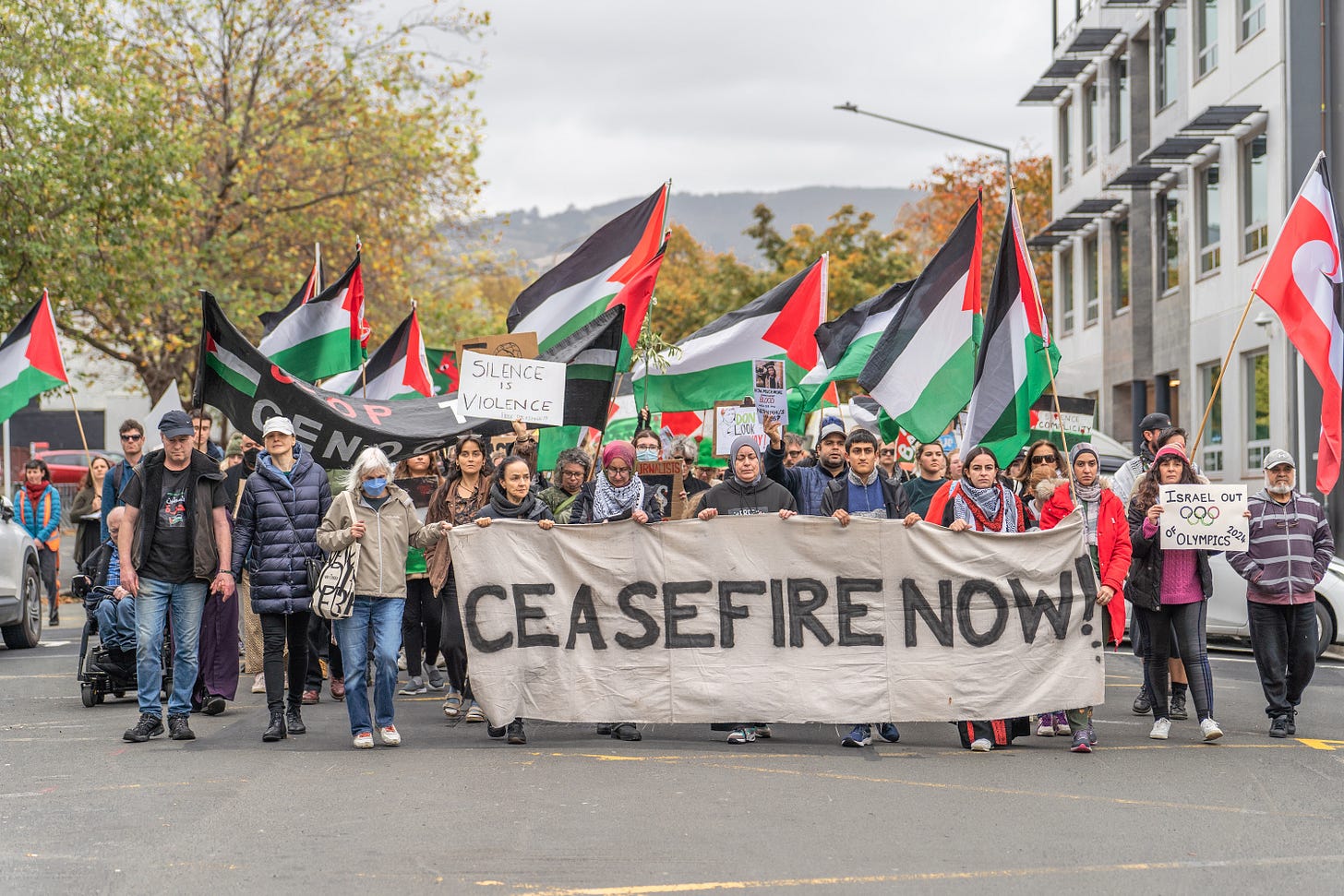
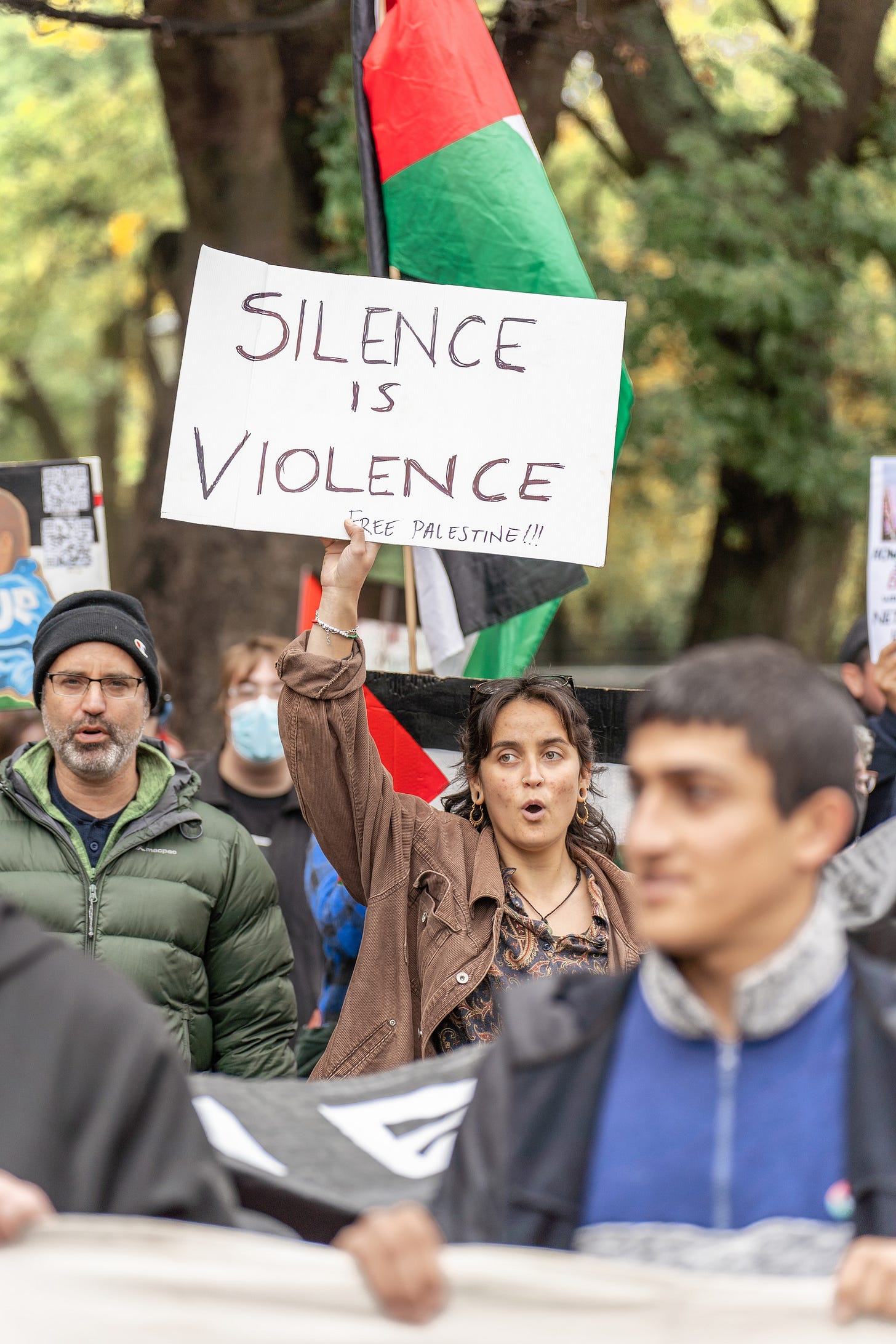
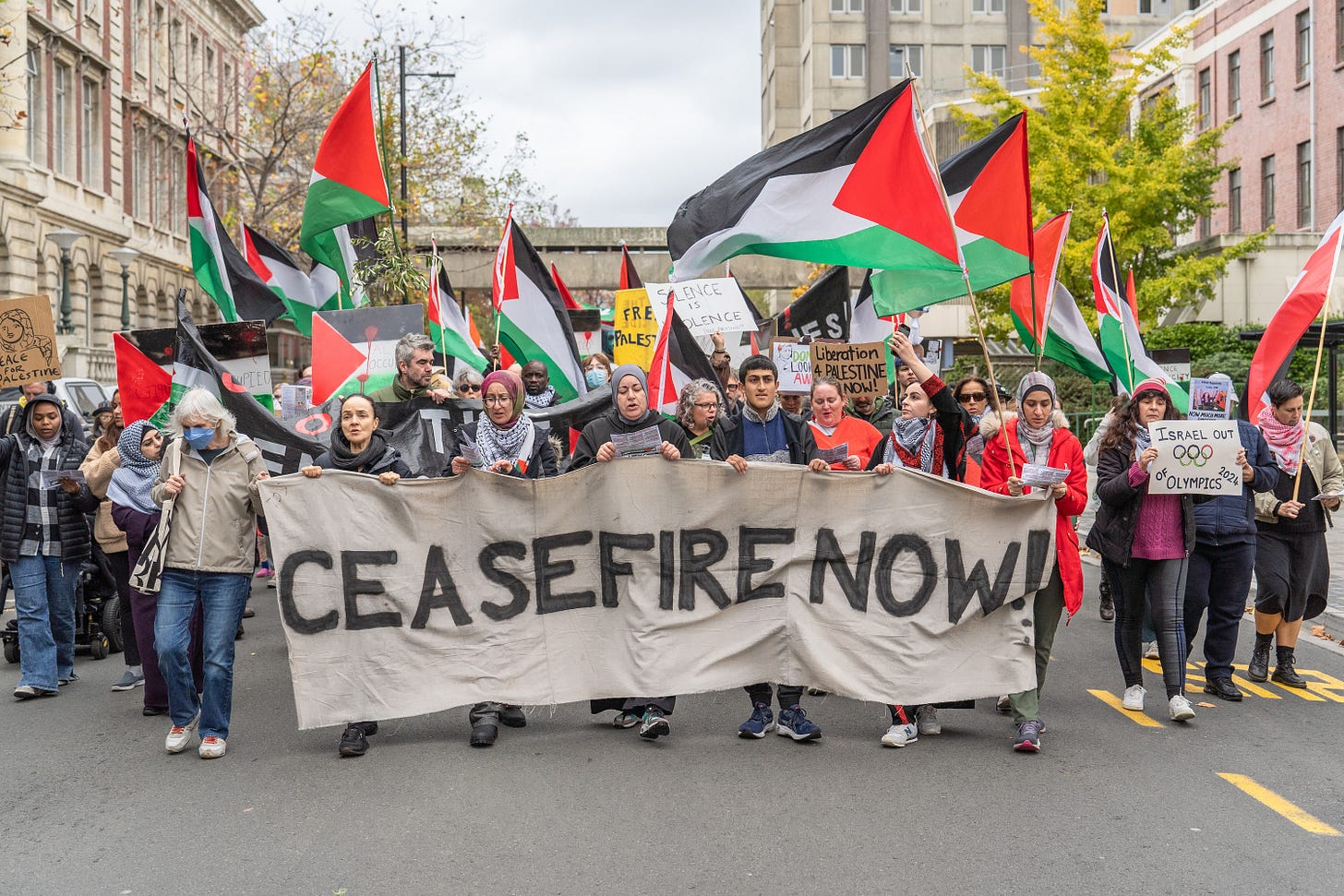
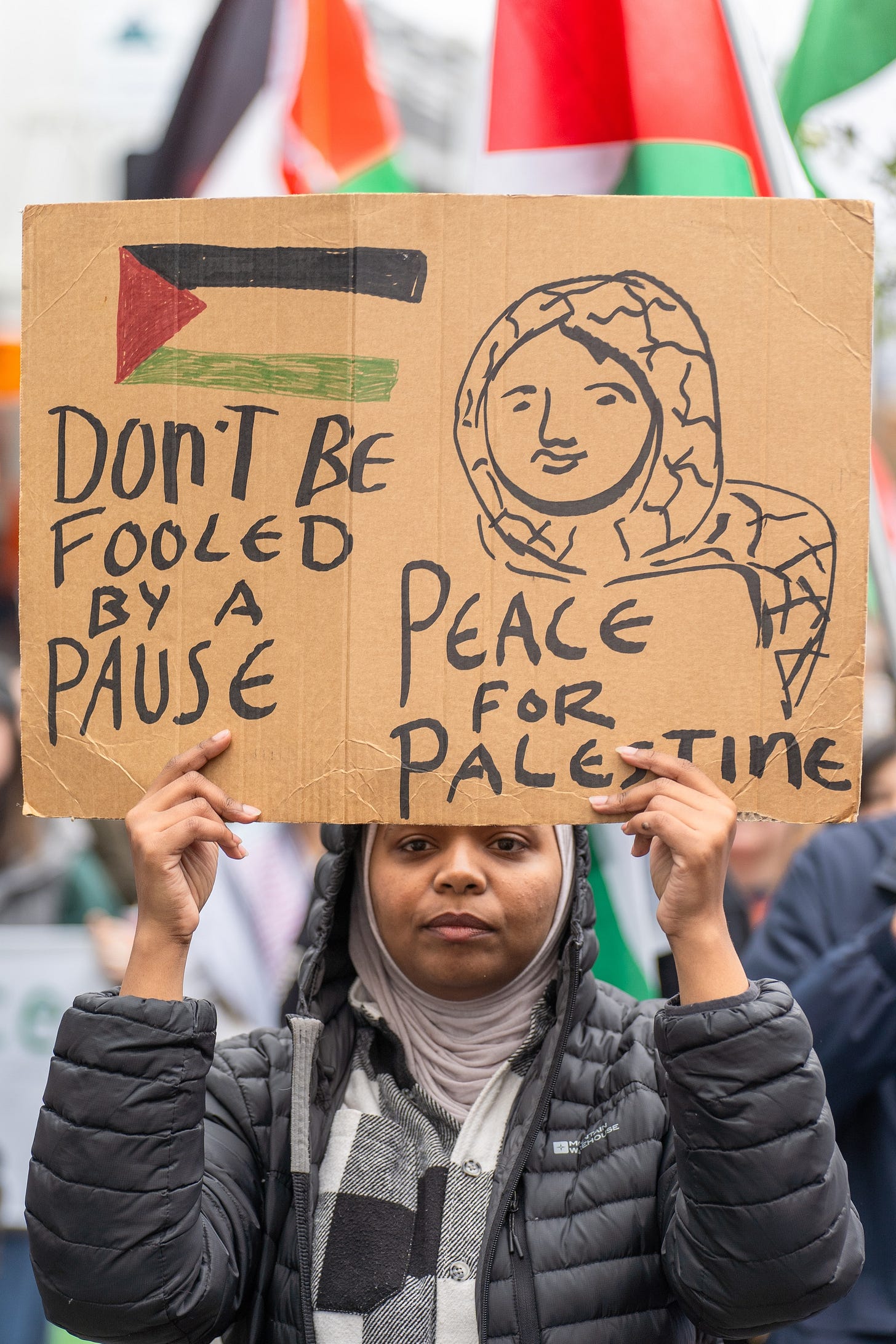
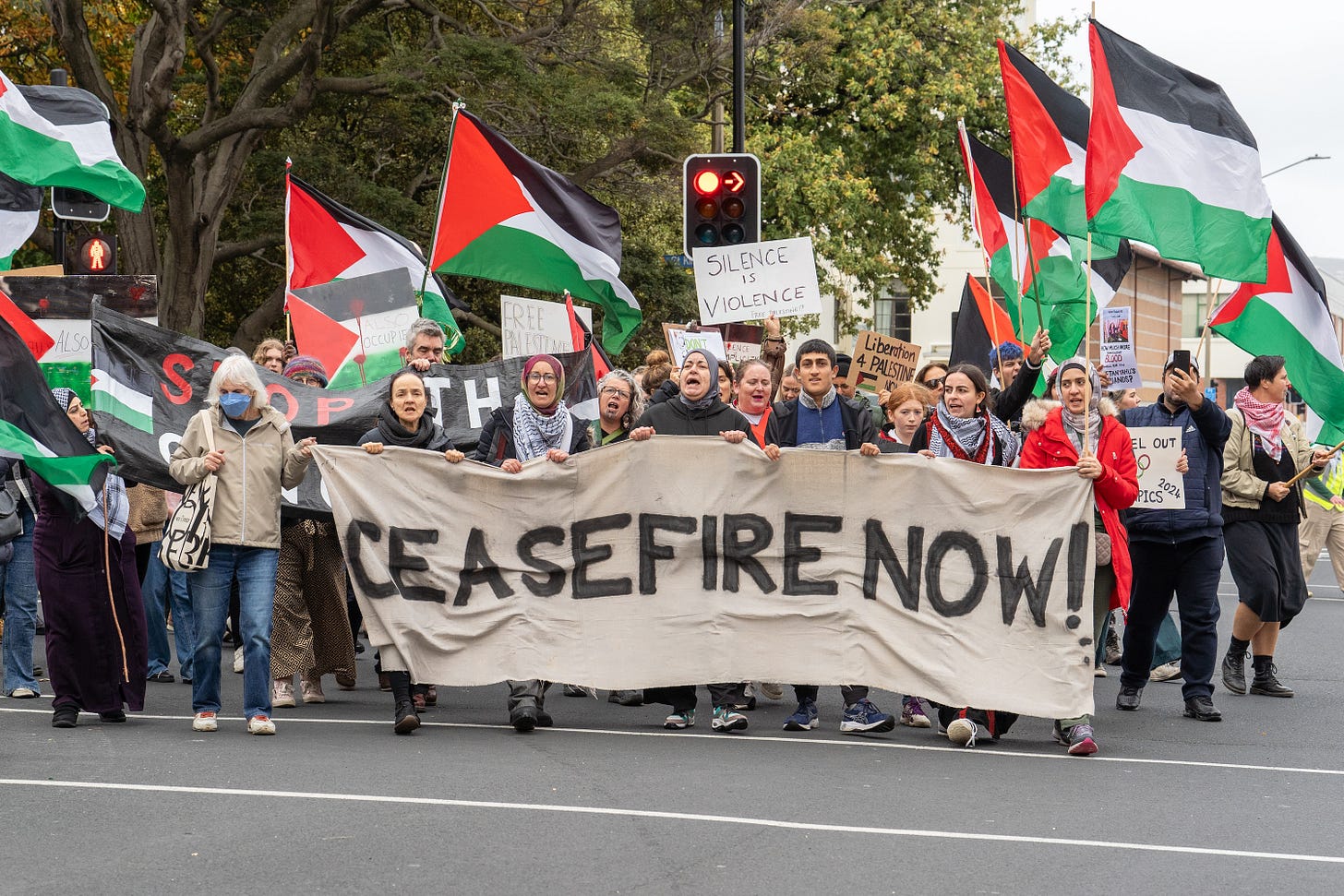
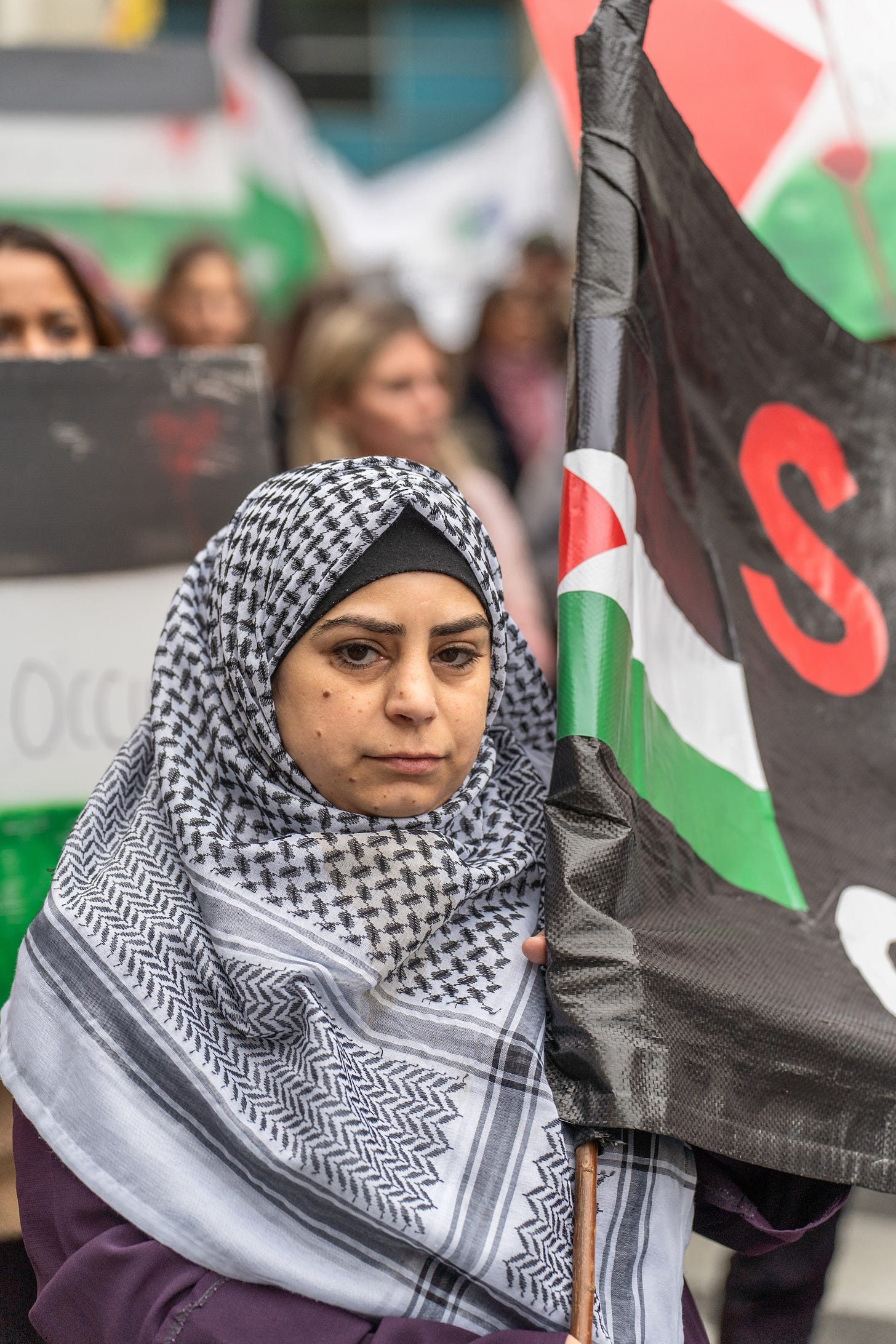
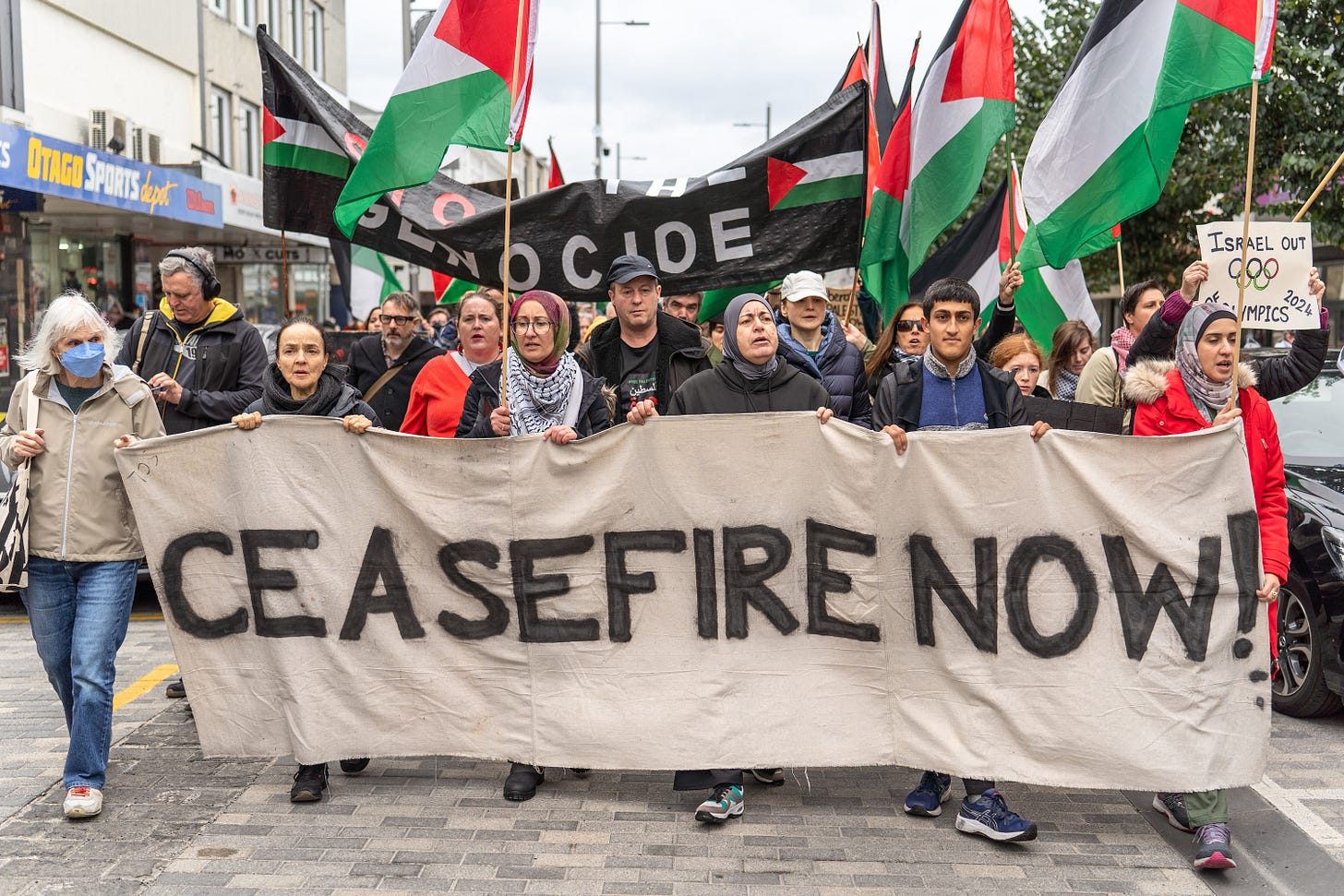
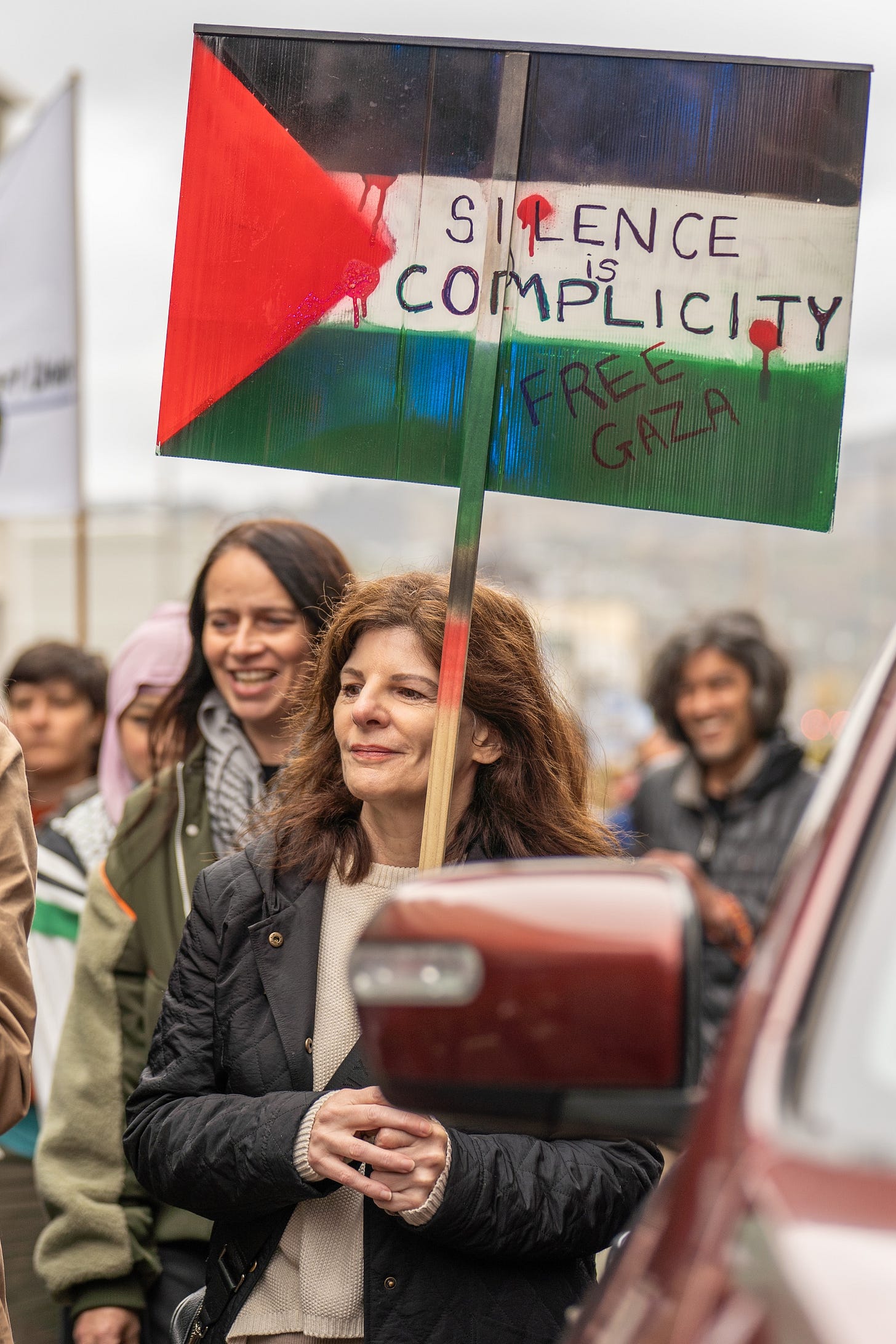
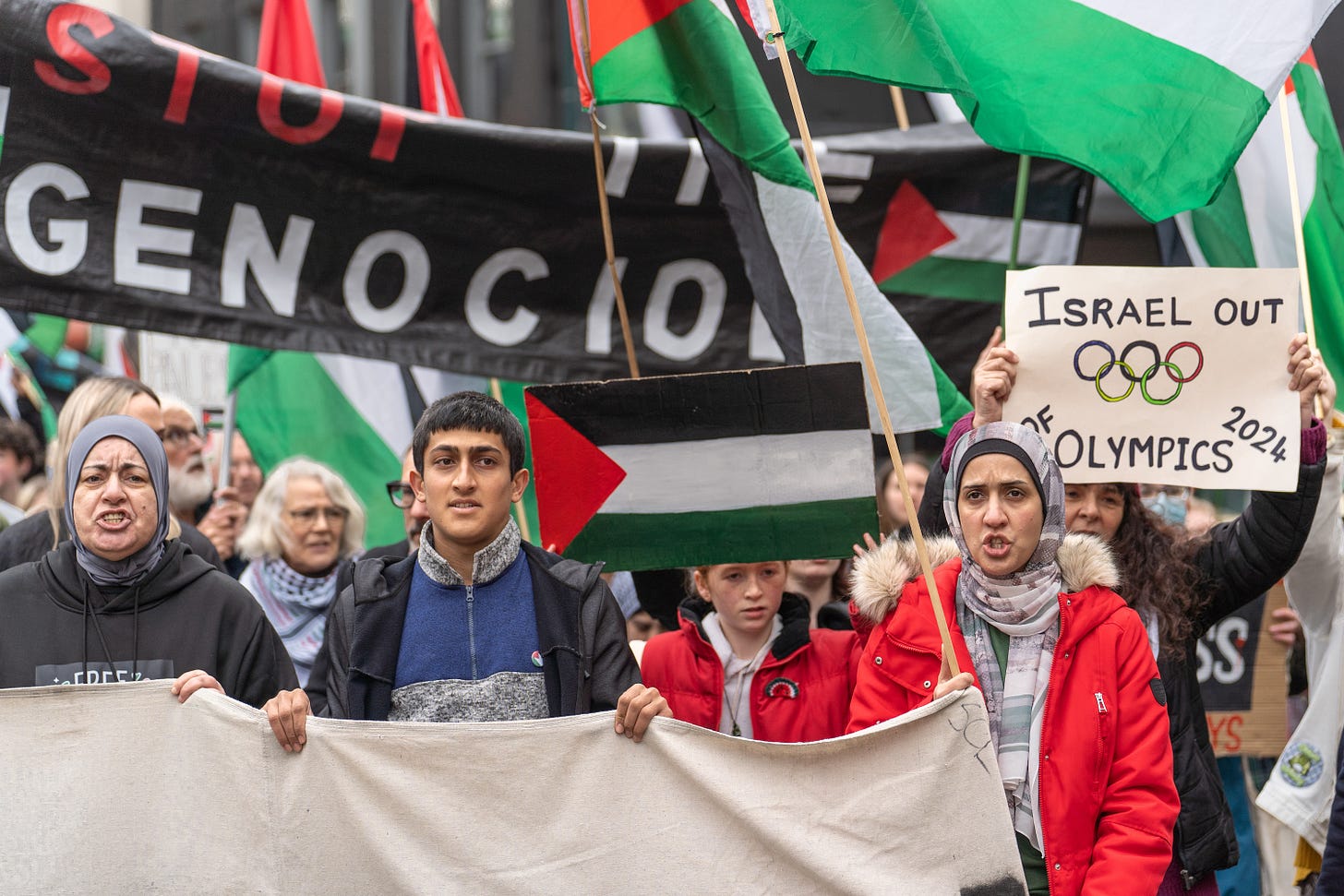
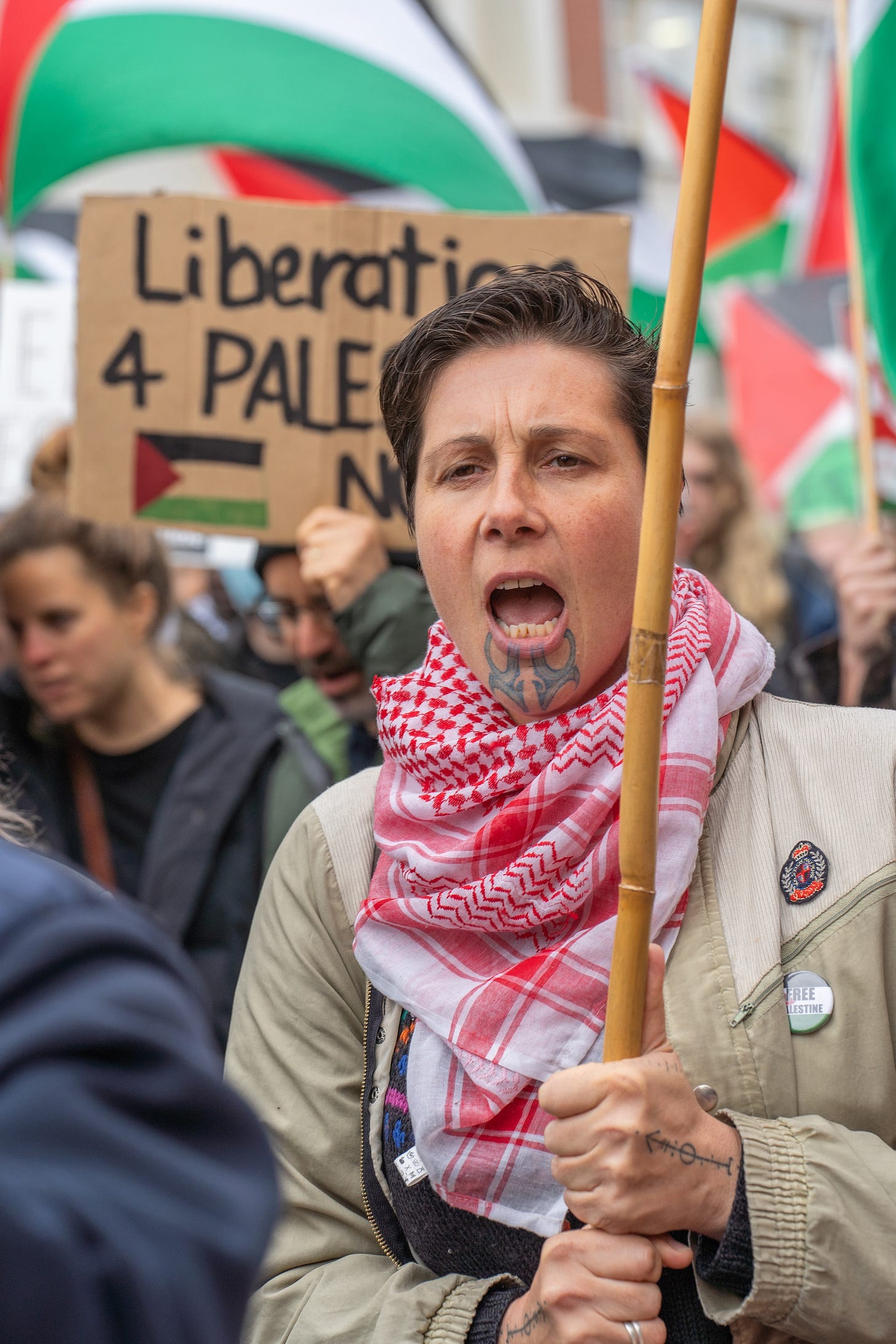
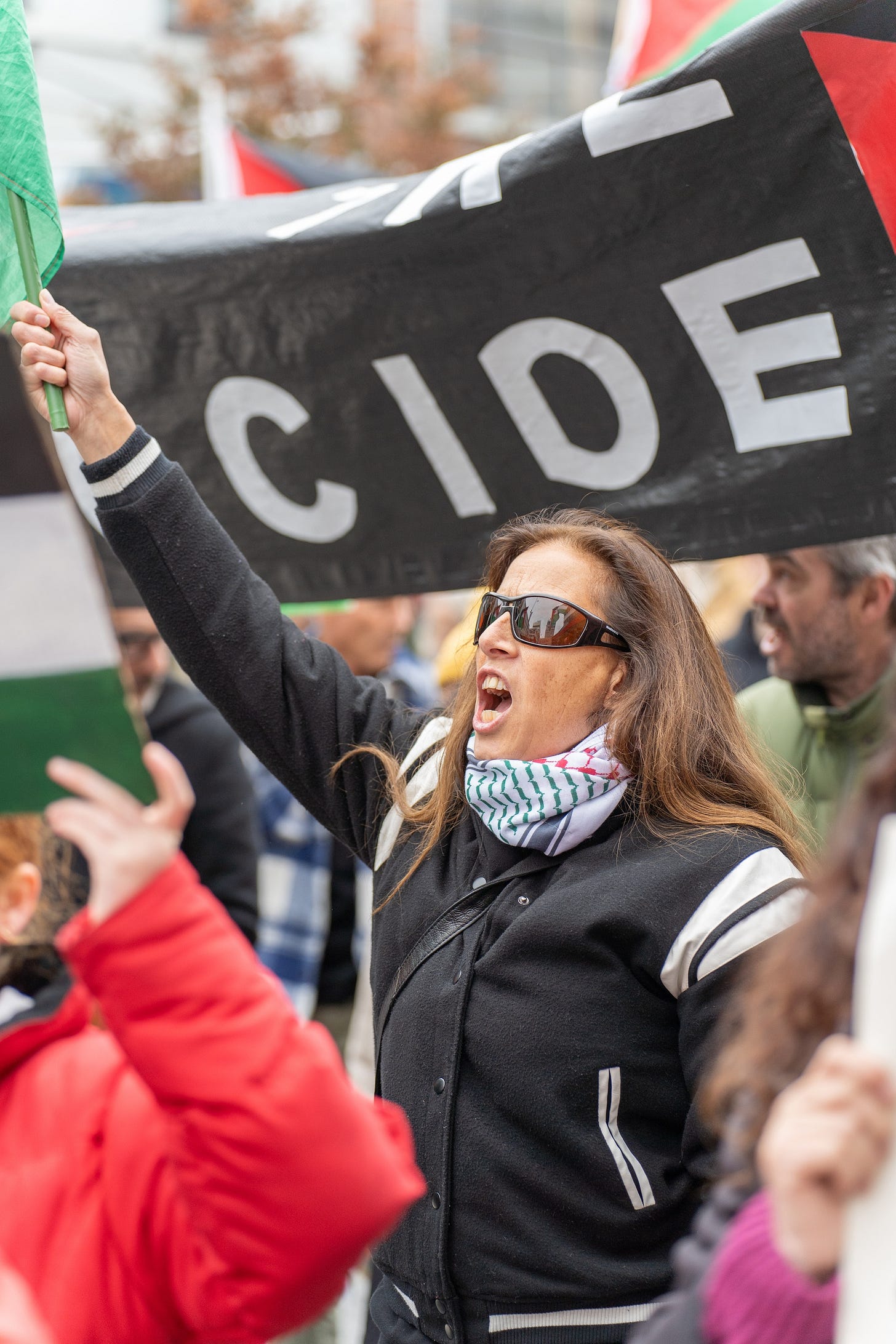
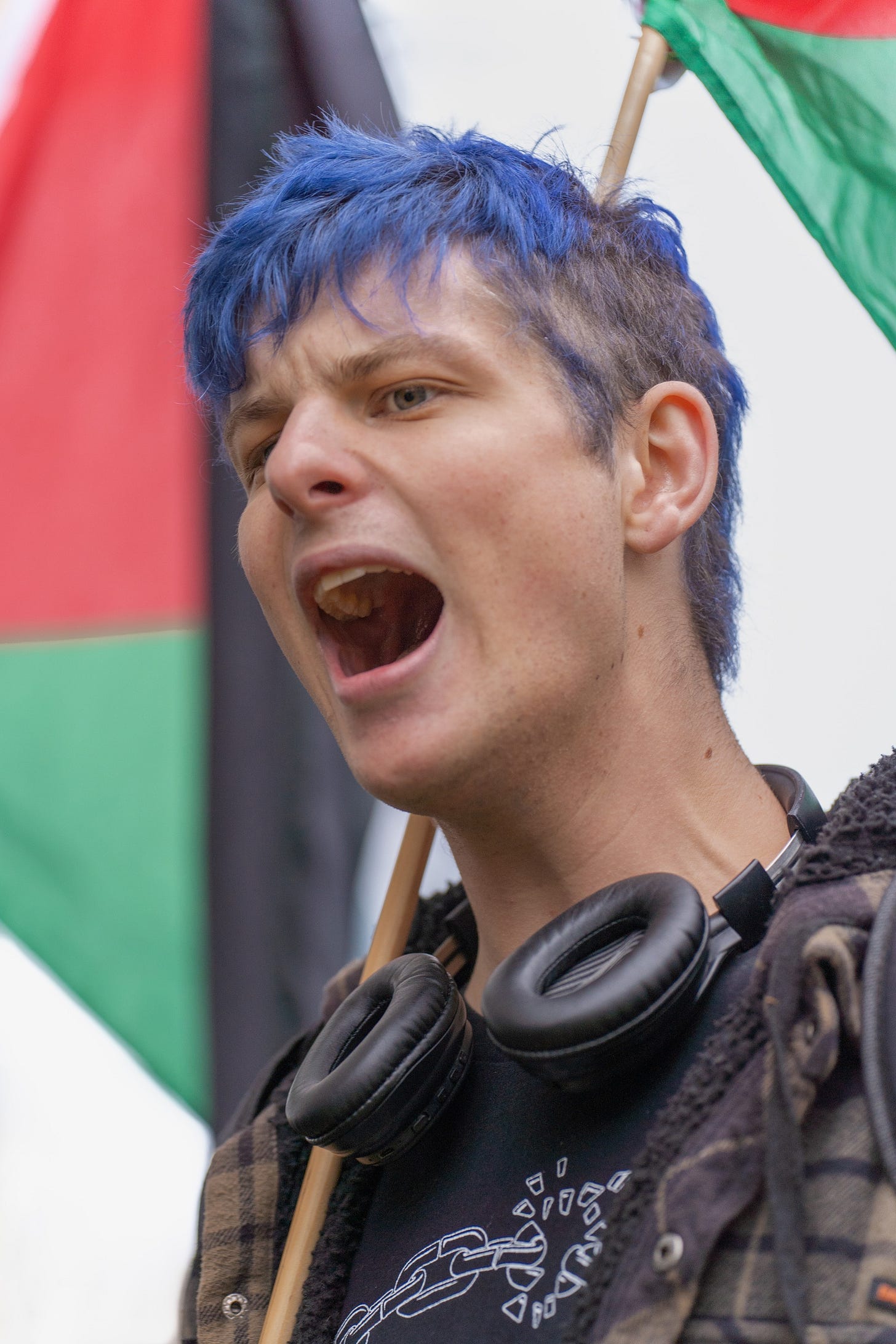
What’s next?
I have taken and shared hundreds, if not thousands, of photos of marches and rallies over the past six months. In the process, I’ve learned a lot about photographing people, especially those who are passionate about the messages they are trying to deliver. Framing, composition, editing, and sequencing can dramatically affect the story that is told, and I realize that I must be thoughtful and deliberate in the choices I make. Artistic decisions are also rhetorical strategies, and they have consequences. I'm becoming more aware of the issues we face when photographing people in public—what is legal is not always ethical—and when documenting politically charged events. When we document public protests, are we not also participants? Is it advisable, or even possible, to remain objective? How does the presence of a photographer alter the event and the resulting documentation? Is photography itself a political act? I've only begun to think about these questions. Perhaps I will try to work through them in future posts.
In my last post, I mentioned that I was processing photographs that I took at a march and rally opposing recent cuts to disability services in New Zealand. You can access a selection of the photographs at tinyurl.com/CutsProtest19April2024 (I was asked not to share photographs that included identifiable children).
What do you think?
I invite you to leave a comment below.




Thank you for these marvelous photos--and your nuanced analysis of the politics of photography, a subject given scrutiny in the US at least since Dorothea Lange's "Migrant Mother" prompted questions about editing, framing, posing, etc. I agree with Gladwyn's encapsulation: "the image is where politics reside." And I appreciate your care in selecting subjects and their expressions (along with the written words that also accompany them). What I see here is a commitment to peace from a broad representation of the Dunedin community and that gives me hope. There is power in these images.
Nice story, very evocative images. The image is where the politics resides. Which is the why the US Congress wants to suppress Tik Tok, the first amendment, small business, and privacy be damned. And if it wasn't for the phone video we would never have known about Rodney King and how the police behaved in minority warehoused communities. It hasn't stopped or slowed police violence because they have seen their funding increase with Biden. But Floyd's and Arbery's killer did go to jail, an earthquake in US white black racial dynamics with immense markers like the acquittal of the killers of Emmett Till.